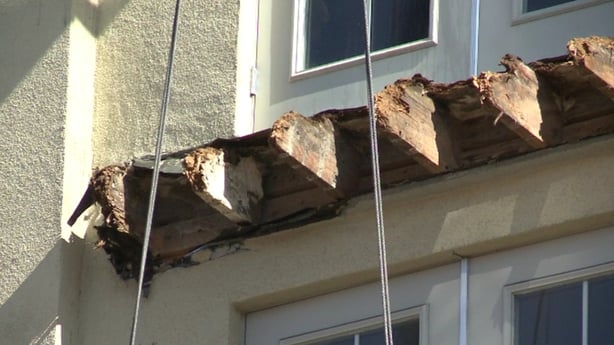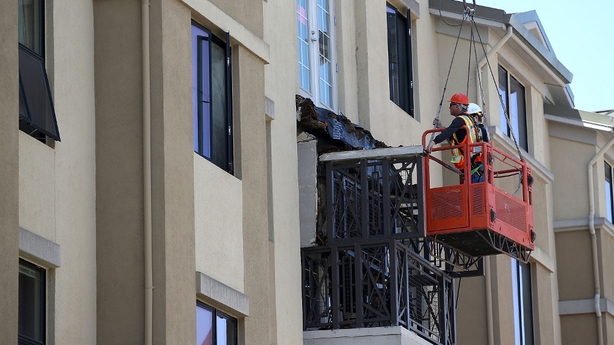Wood rot from exposure to excess moisture most likely weakened the horizontal beams supporting an apartment balcony that collapsed in Berkeley, California, and killed six people, several independent experts have concluded.
The consensus among independent structural engineers was that the fourth-floor balcony should have been sturdy enough to safely bear the weight of the 13 people who were on the deck at the time.
13 Irish students working in the San Francisco Bay Area for the summer fell 12m to the street below when the balcony gave way during a birthday celebration on Tuesday.
Three men and three women in their early 20s died in the collapse and seven others were hospitalised.
Splintered wooden support joists, which experts said were visibly decayed, were left protruding from the building's outer wall after the platform crashed onto a vacant third-floor balcony just below it.

The integrity of the stucco-over-wood-frame construction at the Library Gardens apartment complex, near the University of California at Berkeley, immediately came under scrutiny as city inspectors began to examine the accident site.
Municipal officials declined to discuss the condition of the balcony's underlying structure or speculate on what caused the collapse.
But three Bay-area structural engineers and a building inspector from New York who examined pictures from the site all agreed that wood rot from moisture seeping into the balcony's support beams was a likely factor.
Alvin Ubell, founder and Chief Inspector of Accurate Building Inspectors in New York City, and other experts agreed that defects in the design, installation and maintenance of waterproofing, flashing materials and ventilation could leave untreated wood framing especially vulnerable to decay.
Otherwise, they said the use of wooden timbers to support cantilevered platforms in such construction was commonplace.


Structural failures accounted for about 5,600 injuries from balcony-related falls from 1990 to 2006, according to data collected by the Center for Injury Research and Policy in Columbus, Ohio, and published by the American Journal of Emergency Medicine in 2009.
As for questions of weight, Derrick Hom, the Oakland-based President of the Structural Engineers Association of Northern California, said the crowd on the deck may have come close to the balcony's maximum design capacity but "probably was not the critical deciding factor".
Taryn Williams, a forensic engineering specialist in San Francisco, and Berkeley-based engineer Joshua Kardon, who visited the site, agreed, assuming the students were not doing anything to put undue strain on the deck, such as jumping up and down.
Mr Hom and his fellow experts dismissed any suggestion the balcony, measuring about 2.7 square metres, was designed more as an architectural design than as a functional balcony space.
They said any outside deck with a door, which the balcony had, would only be permitted if designed and built to full code.
The deck below the fallen balcony was also removed after being tested and found to be unsound after the accident.
A spokesman for the city, Matthai Chakko, said that an official investigation was under way and that inspectors were looking into the state of the building.
Results will not be available for several days, he added.

